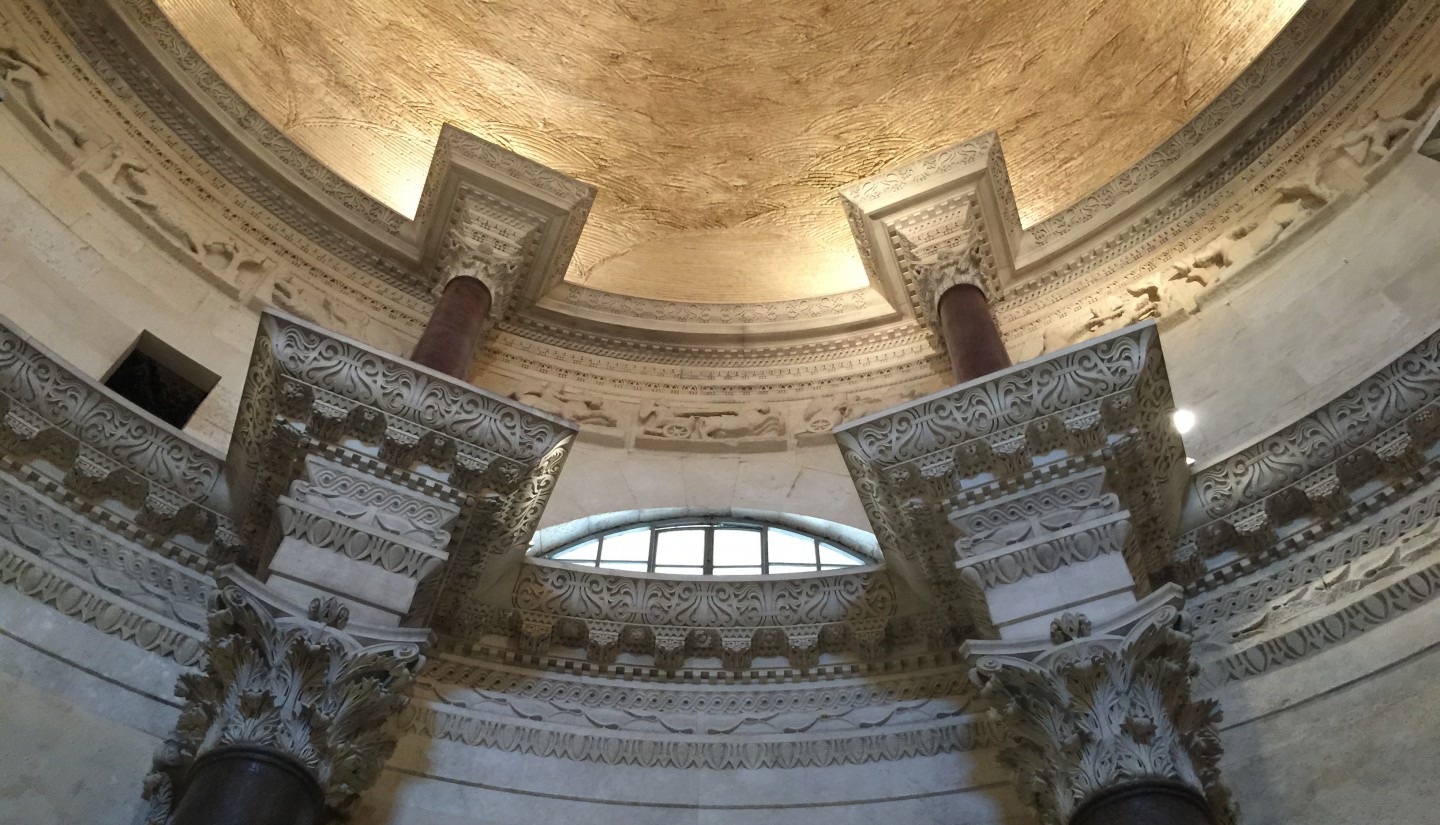
Overall 2 ** it’s in terrible state – but gets the ranking because of what it is!
Display 0 nothing, what a shocker
Access 1 * you can’t go in but can get a view from the fascist square around it
Atmosphere 1 * gloomy neglect
Other 5 ***** Just think who it was for – one of the major figures of World History and it’s next door to the re-located but, magnificent Ara Pacis in it’s modern Museum.
The Mausoleum of Augustus was built by Augustus in 28BCE on the Campus Martius, close to the Tiber north of Rome.
Intriguingly it was one of the first – not the last – projects initiated by Augustus in Rome, just after assuming unchallenged power over the ‘Republic’, after his Victory at Actium in 31 BCE. He lasted until 14AD. Does this suggest an element of pessimism in his character or just careful planning?
Just imagine if Octavian as he then was had died in Egypt of disease in 30BCE, it seems highly likely that the Roman Republic would have continued to tear itself apart with Civil Wars and the apparent inevitability and stability of the Roman Empire created by Augustus and Agrippa might never have happened. Thus the 5 stars in the ‘other’ category. Just think what if…..
It was circular in plan and consists of concentric rings of brick. It was planted with cypresses and probably capped with with a status of Augustus. There were burial spaces in vaults inside and granite obelisks flanked the arched entry.
We know that Marcellus, Agrippa, Drusus, Octavia Minor, Gaius Caesar, Lucius Caesar were interred there before Augustus. After him the ashes of Livia (his wife), Germanicus, Agrippina, Nero and Drusus sons of Germanicus, Caligula, Tiberius, Claudius, Britannicus and Nerva were interred there.
There is a story that in Alaric’s Sack of Rome in 410, that the ashes of the imperial family were scattered on the ground as the Goths made off with the urns. However there appears to be no corroboration for this. The Mausoleum was used as castle in the middle ages, became successively a bull ring and a theatre, until cleared by Mussolini with the newly reconstructed Ara Pacis alongside. After the War it was allowed to fall into shame-fall neglect, although at last renovations seem to be underway, financed by a Telco.
At present the site is closed during reconstruction works.



